Adding animals to your property is never a matter of if you should do it, but when you will do it.
Self-sufficient living is more than often made possible through the keeping and rearing of a variety of animals that provide us with goods. These products are staples in our diets and homemade products.
However, not just any animal is a good fit for you and your property. Some animals are lovely to tend to and give much to your life as a whole. Other animals, many quickly realize, are not so necessary and are a bigger headache than you could have imagined.
Poultry
The first animals most homesteaders introduce to their properties are chickens and for great reason!
Chickens are very easy to keep, give fresh, delicious eggs daily, and are a great source of meat. And it’s worth mentioning that their free roaming throughout the property adds an air of peace and relaxation to your everyday.
But poultry goes beyond chickens. Ducks are excellent sources of meat and eggs, Geese feathers are valuable to sell or use for your own needs, and let’s not forget about the turkey and its astounding meat production. There are, of course, cons to some of these animals (looking at you, messy ducks), but poultry is by far the easiest livestock to keep with a big reward.
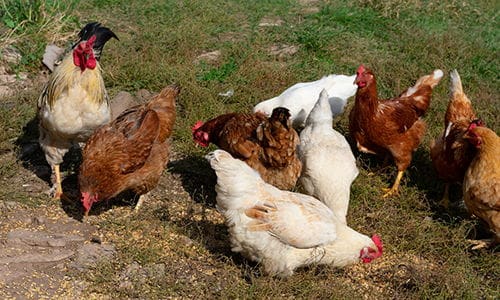
Fish
Farming fish for your personal consumption is not one of the first ideas most homesteaders think of when considering which livestock to add to their property. If you have a pond, keeping fish is definitely something worth looking into.
After a bit of time and energy spent on building a working ecosystem in your pond, you will have an abundant protein source in your backyard without having to put in heavy maintenance. The type of fish you keep in your pond depends greatly on your location, but Tilapia, Trout, and Catfish are all popular fish to keep for homesteaders.
Once your pond and ecosystem are in working order, enjoy lazy afternoons fishing for fresh fish in your own backyard!
Related: DIY Aquaponics
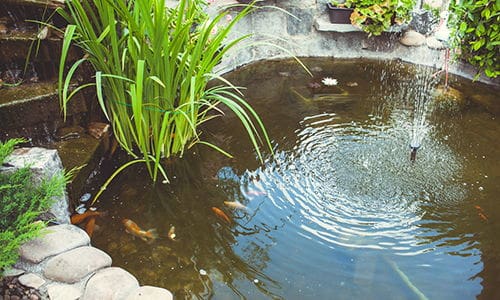
Pigs
Pigs are some of the best livestock to keep due to their feed-to-meat conversion ratios and their easy, laid-back nature.
Compared to other medium-sized livestock, pigs require much less space as they are not extremely active animals. And unlike what most people think of pigs, they are actually quite clean!
The biggest con about keeping pigs is the volume of fodder needed to keep them well-fed. Keeping up with a pig’s appetite is an expense not always considered before bringing your piglets home. If you have the space on your property, free-roaming pigs will help to cut the expense of fodder, as they are expert foragers.
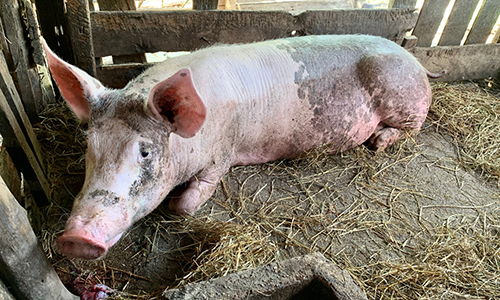
Goats
Goofy and curious, goats are entertaining additions to your property.
But more importantly, this small-sized livestock is mostly self-reliant, practical, and of versatile use on your property. One goat can give two to four quarts of milk daily. This milk can be used for cheese making, drinking or cooking, and is excellent for soap and tonic making.
Goats are also excellent livestock to keep to help tame hard-to-manage plots of land due to their non-stop grazing.
These animals are generally easy to keep, but any goat owner will tell you that you must install very sturdy, reliant fencing to keep them in their designated areas. Goats are excellent escape artists that will make a meal out of your flower garden or vegetable patch in the blink of an eye.
Related: Goats Or Sheep?
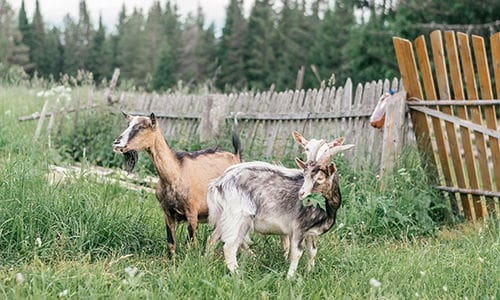
Sheep
Sheep are lovely grazers that act as a gentle lawn-mower for parts of your property, much like goats. However, they pose a few challenges that those looking for low-maintenance animals would want to avoid.
The two biggest concerns with keeping sheep are the annual sheering of their wool and footrot.
Wool from sheep is great for those who want to spin their own wool for clothing, or even to sell for those looking to keep a large herd. But the act of shearing the goats of their wool once a year is a lot of work and difficult for both sheep and humans. It is possible to hire professionals to sheer your sheep for you, but this is often expense homesteaders look to avoid.
Sheep are also sensitive to footrot. Their hooves soften and allow for a plethora of bacteria to grow. To avoid this, sheep hooves should be trimmed every 8 weeks.
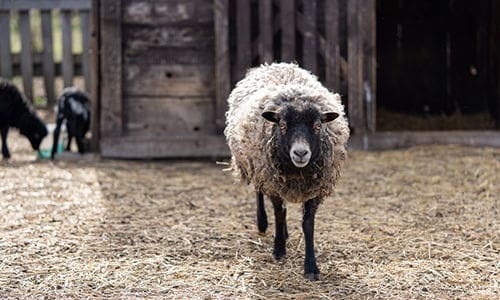
Donkeys
Donkeys are livestock that can be more trouble than expected.
Donkeys are excellent companions out on the fields and trails and their milk is of great use to many, but these gentle creatures need more attention and accommodations than your smaller livestock.
Donkeys are heavy grazers who can easily become overweight. This weight gain opens the door to a variety of health issues that must be regularly treated with the help of a veterinarian. Just as sheep, footrot is a concern, and they should have their hooves regularly cleaned and trimmed.
And unlike smaller livestock, Donkeys are prone to dental disease and must have their teeth checked at least twice a year and more regularly for geriatric donkeys.
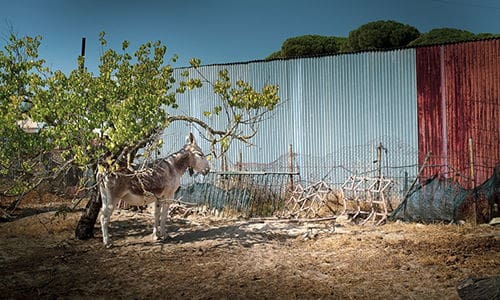
Dairy Cows
Dairy cows are a big investment of time, energy, and resources, and for these reasons, they are considered to be difficult livestock to keep on your property.
Dairy cows must be milked twice a day, a great commitment of time for homesteaders who already keep busy tending to other animals and projects on their land.
Cows also take up a large amount of land, with the recommended amount of land being one acre per cow. If you are keeping grass-fed cows and want the grass to have a chance to grow back, your cows will need to be moved to a different pasture, bumping up the recommended amount of land needed to two acres per cow. And unlike other grazers, grass and hay is not always enough to keep your cows in good shape.
Many cows require mineral supplements to keep healthy.
You may also like:
 Livestock Animals You Should Start Raising For The Upcoming Economic Crisis
Livestock Animals You Should Start Raising For The Upcoming Economic Crisis
An Insanely Effective Way to Build a 5 Year Food Stockpile (Video)
Vegetables You Can Re-Grow From Scraps
How To Raise Quail And Why You Should Do It
7 Domestic Animals That Are Too Easy To Raise
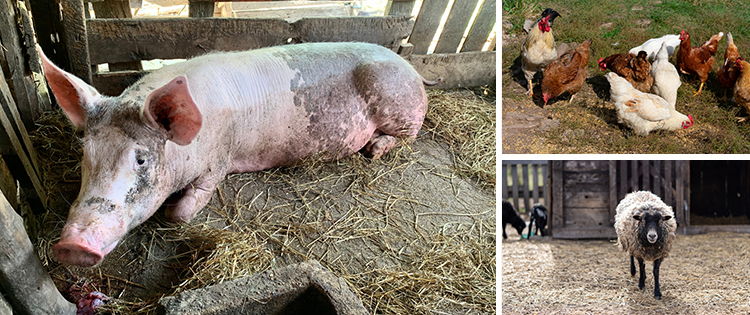

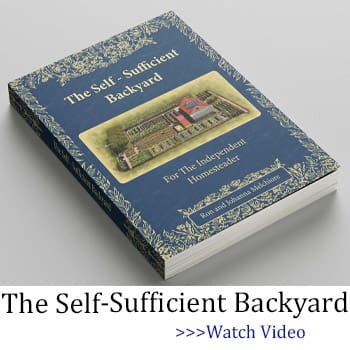


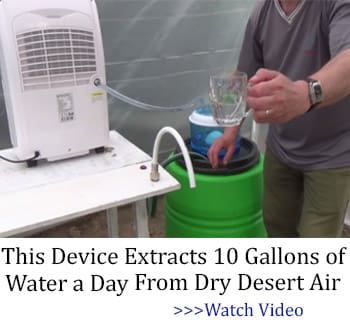

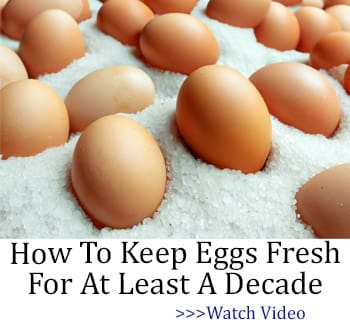

Your view on rabbits?
You should also include rabbits & yaks to this list.
Rabbits are fairly low maintenance, but startup costs can be expensive.
Yaks are getting to be a homesteaders favorite over beef. Lower carbon footprint. Easier on land & cheaper on feed (1/3 of cattle).
I have been raising chickens for three years ow. Plan to add ducks and Turkey. . would like to add goats for milk and cjeese
What about quails? They are ready to harvest in 6 weeks. And start laying at that timeframe as well. They take a small amount of space, “fly under the radar” as far as homeowner associations go, and their eggs are a superfood. The poop is excellent for gardens (less acidic than chicken poop) and they eat less so lower feed cost as well.